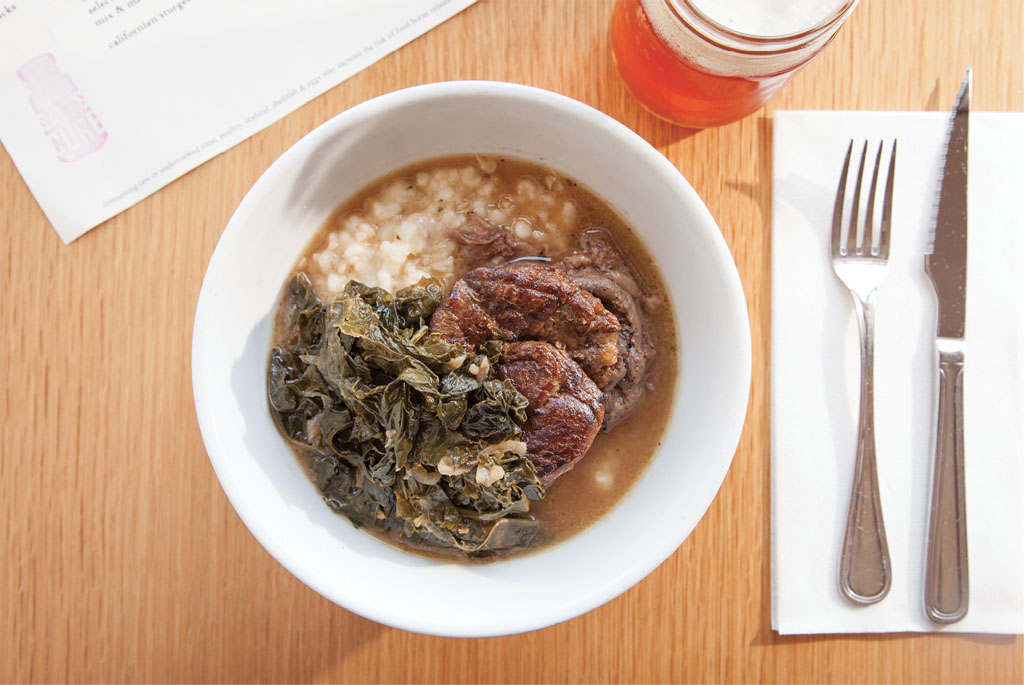

“May Your Name Spread Like Oil”
—Translation from the Latin inscription Oleum Effusem Nomen Tuum found on the entrance to an olive grove in Andalusia, Spain
If you like clean, locally sourced cuisine, Zak Walters’s restaurant, Salt’s Cure, will be right up your alley. Opened in late summer of 2010, Salt’s Cure—which Zak opened along with his fellow chef/business partner Chris Phelps—has had great success. Being named one of the 99 Essential Restaurants by LA Weekly in 2011, this small American eatery has been called the restaurant of the future more than once. However, Salt’s Cure would look more at home in Mad Max than Space Odyssey. Their website is simply a logo and a grainy cell phone picture of a chalkboard where they write their daily menus, and the bright restaurant is also starkly minimal. The whole space only seats thirty-four, and the majority of the room is a bar that wraps around the open kitchen. “I like small restaurants, sixty seats max,” Zak says. “When I got started as a chef in Oklahoma, I worked at a 300-seat restaurant that would do 900 for lunch. I tell you a hell of a lot more bad frittatas than good ones went out.” But despite its small size, Salt’s Cure seems to be on top of and ahead of every rising trend in food: friendly, informal service; minimal, clean restaurant design; a dedication to doing all their butchery in-house; a focus on fresh local ingredients; and a full snout-to-tail menu.
Zak expresses himself by the food he cooks—and by his tattoos. His right arm is wrapped in an olive branch, and is inscribed with the Latin phrase Oleum Effusem Nomen Tuum, which he found in Paula Wolfert’s Mediterranean Cooking. In her book, she talks about traveling in Andalusia, in Spain, where she saw the phrase carved on the entrance to an olive grove. According to the proprietor, the words mean “May Your Name Spread Like Oil” and date back to when the property was a church. The Catholic monks were making an analogy to the way oil covers everything, much like the word of God. Zak got the tattoo when he started to work in kitchens and found that he was burning himself a lot. He says, “I noticed how girls looked at the scars and thought, well, chicks like things on guys’ arms so what the hell.” After talking to several tattoo artists who passed on the idea because of the level of intricacy he wanted in the design, a friend of a friend who worked at a shop called the Electric Pen in North Hollywood did the whole piece for $100. “It’s a funny thing to have; I haven’t been to church since I was seven.” Zak laughs explaining it. “But it relaxes me when I lose my temper, which seems to be happening a lot these days.”

NOTES FROM THE CHEF
The amounts of each ingredient in the rub are up to you. Just use what you like. You will need about 10 ounces of rub to cover each piece of pork, so keep that in mind as you mix.